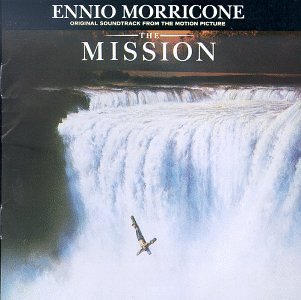 Some stories sort of get religion. Like a second-rate novel, they give readers only half the picture rather than the full one. Take this Washington Post story by Jacqueline L. Salmon.
Salmon's story was critical of short-term religious trips overseas. Her lede began this way:
Some stories sort of get religion. Like a second-rate novel, they give readers only half the picture rather than the full one. Take this Washington Post story by Jacqueline L. Salmon.
Salmon's story was critical of short-term religious trips overseas. Her lede began this way:
Not long ago, the families of Fairfax Presbyterian Church spent thousands of dollars to fly their teens to Mexico for eight days of doing good. They helped build homes and refurbish churches as part of an army of more than 1 million mostly Christians who annually go on short-term international mission trips to work and evangelize in poverty-stricken lands.
Yet even as those trips have increased in popularity, they have come under increased scrutiny. A growing body of research questions the value of the trips abroad, which are supposed to bring hope and Christianity to the needy of the world, while offering American participants an opportunity to work in disadvantaged communities, develop relationships and charge up their faith.
Critics scornfully call such trips "religious tourism" undertaken by "vacationaries." Some blunders include a wall built on the children's soccer field at an orphanage in Brazil that had to be torn down after the visitors left. In Mexico, a church was painted six times during one summer by six different groups. In Ecuador, a church was built but never used because the community said it was not needed.
The story held my attention. Like surely many GR readers, I know someone who undertakes such trips; my younger sister, Anne, returned recently from a group trip to El Salvador. I had long wondered why these Christians traveled abroad when they could help the poor and needy at home, so I was glad to see Salmon examine this topic with critical eyes.
Salmon's story also featured lots of context -- historical, economic, and sociological:
Despite the concerns with trips abroad, their popularity is soaring. Some groups go as far away as China, Thailand and Russia. From a few hundred in the 1960s, the trips have proliferated in recent years. A Princeton University study found that 1.6 million people took short-term mission trips -- an average of eight days -- in 2005. Estimates of the money spent on these trips is upward of $2.4 billion a year. Vacation destinations are especially popular: Recent research has found that the Bahamas receives one short-term missionary for every 15 residents.
At the same time, the number of long-term American missionaries, who go abroad from several years to a lifetime, has fallen, according to a Wheaton College study done last year.
The short-term mission trip is a "huge phenomenon that seems to be gaining in momentum rather than waning," said David Livermore, executive director of the Global Learning Center at Grand Rapids Theological Seminary, who studies the trend.
Later in the story, Salmon adduced evidence that some religious trips are expensive and ineffective:
But research has found that the trips tend to have few long-term effects on the local people or on the mission travelers. Some projects take away work from local people, are unnecessary and sometimes dangerous.
Mission groups also often bring their own experts and ignore local authorities on the ground.
In Monrovia, Liberia, three years ago, tragedy occurred when visitors built a school to their standards instead of Liberian standards. During the monsoon season, the building collapsed, killing two children, Livermore said.
Critics also question the expense involved in sending people long distances. Short-term missionaries pay $1,000 each, or far more, in plane fare and other expenses to get to remote destinations.
A 2006 study in Honduras found that short-term mission groups spent an average of $30,000 on their trips to build one home that a local group could construct for $2,000.
"To spend $30,000 to paint a church or build a house that costs $2,000 doesn't make a whole lot of sense," said Kurt Ver Beek, a professor of sociology at Calvin College who conducted the research.
Were it not for one major flaw, Salmon's story was first rate. It was interesting, informative, and well researched.
But the story had one flaw: Its emphasis was almost totally on social work and aid for the poor. What it neglected to emphasize is that some religious trips are designed to save souls.
Yes, Salmon wrote that participants "hold Bible classes" and "evangelize." But she neglected to elaborate on what those terms mean. The reader is left with the overwhelming impression that overseas religious trips are designed to build homes and paint buildings rather than to win souls for Christ.
This second purpose of missions casts Salmon's story in a new light. The article notes that many church trips are costly, but what's the price tag of conversion? The article notes that church trips are increasingly popular, but what percentage are designed mainly for social work vs. evangelization?
Don't get me wrong. As a Catholic, I appreciate both models. But there are two models, not just one as this story implies.
